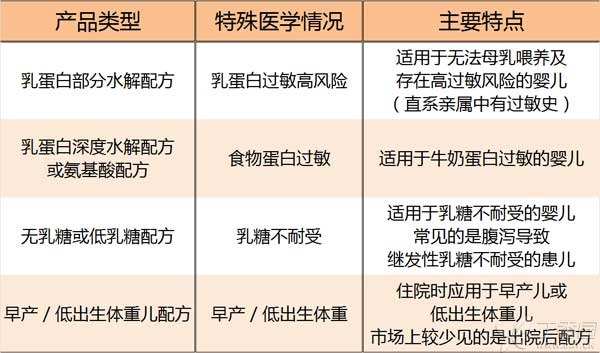
For infants, breast-feeding is the most ideal feeding method. Breast milk not only contains beneficial ingredients that formula milk cannot surpass, but also brings benefits to mothers and babies through intimate contact of breast-feeding, which formula milk feeding cannot replace.
However, when mothers cannot breastfeed, they must choose the appropriate formula.
The addition of ingredient to formula milk powder
At present, the basic ingredients in the formula milk powder on the market are all stipulated in the national standards and belong to the necessary ingredients for the growth and development of infants, including:
Major nutrients
- Protein, fat (linoleic acid,-linolenic acid, etc.), carbohydrate; Vitamin A B C D E, folic acid, etc.; Minerals and essential trace elements (sodium, potassium, calcium, iron, zinc, selenium, magnesium, iodine, etc.).
Optional Additive Ingredients
-
DHA, AA, choline, inositol, nucleotide, taurine, etc.
These will be indicated on the back of the milk powder product [Nutrition Composition Table]. Generally speaking, the composition of qualified infant formula is not much different.
The nutritional composition list is usually followed by an ingredient list, indicating the sources of these nutrients, such as whether the product uses milk powder or raw milk, lactose or other sugars, etc.
Next, let’s look at some hot topics in formula milk powder.
[Optional Additives] Needing Attention
1. DHA and ARA:
- DHA, namely docosahexaenoic acid, can be synthesized by human body through-linolenic acid metabolism; ARA, or eicosatetraenoic acid (arachidonic acid, also known as AA), can be synthesized by human body through linoleic acid metabolism.
As for the health effects of DHA and ARA, the scientific community has reached a consensus that DHA and ARA are helpful to the development of infants’ brain and vision.
At present, DHA and ARA are generally added to the infant formula sold on the market. Breastfed mothers can also increase the content of DHA and ARA in breast milk through a balanced diet.
In the < < Specification for Labeling Pre-packaged Special Dietary Foods > > implemented in July 2015 in China, it is stipulated that:
- Only when DHA ≥ 0.2% total fatty acid content can DHA be declared on the label; Only when DHA ≥ 0.3% total fatty acid content in larger infant formula foods (mainly refers to infant formula milk of 6-12 months old) can functional declaration be made (i.e. It is helpful for the development of infant vision).
Therefore, when you choose milk powder, you can simply calculate the amount of DHA on the nutrition label divided by the fat content to roughly know whether DHA is added enough.
2. OPO
OPO, the chemical name is 1, 3-dioleic acid 2-palmitate triglyceride, is a [high] component in infant formula milk powder. OPO comes from palm oil, and the intermediate [P] refers to palmitic acid, indicating that palmitic acid binds to the middle position of triglyceride, with oleic acid at both ends.
Early studies showed that palmitic acid accounts for about a quarter of the total fatty acid content in breast milk and is an important source of fatty acids for infants, so formula milk powder uses palm oil rich in palmitic acid to simulate the ingredients of breast milk.
However, further research later found that In the palm oil added to the formula, The position of [P] (that is, the position of palmitic acid) is different from that in breast milk, which can be simply expressed as [POP], indicating that palmitic acid binds to both ends of triglyceride and is easy to form difficult-to-absorb [calcium soap], which not only affects the absorption of palmitic acid and calcium, but also makes baby’s feces dry and hard, and in serious cases constipation.
This led to the birth of OPO, where [P] binds in the middle of triglycerides, as is common in breast milk. Subsequent studies have also confirmed that formula milk with a certain amount of OPO can promote digestion and absorption of fatty acids and calcium compared with ordinary formula milk.
It is worth noting that palmitic acid accounts for about 44.5% ~ 73.9% of the formula verified by authoritative research. When selecting products, it depends not only on whether OPO is added, but also on how much OPO is added and whether the proportion is sufficient.
3. Probiotics and prebiotics
Probiotics
Probiotics refer to active microorganisms that can have beneficial effects on the health of babies. At present, the State has approved seven probiotic strains that can be used in infant formula milk powder, namely:
- Lactobacillus acidophilus, animal bifidobacterium, two strains of bifidobacterium lactate, two strains of lactobacillus rhamnosus, lactobacillus roy
Probiotics need to reach a certain dose to play a role, and in order to maintain their activity, there are certain requirements on the preparation process and preservation conditions of formula milk powder.
Prebiotics
Prebiotics are simply the [food] of [beneficial bacteria], which can help the growth of beneficial bacteria, thus improving intestinal environment and beneficial to health. At present, the prebiotics commonly added in infant formula milk powder sold on the market are galactooligosaccharide, fructooligosaccharide, fructooligosaccharide, polydextrose, etc.
It is a complicated process for newborns to colonize intestinal flora from aseptic state at birth. It is affected by factors such as delivery mode and feeding mode. Many studies have verified that healthy intestinal flora has positive effects on digestion, immunity and metabolism of infants.
Breast milk contains flora and oligosaccharides. Breast feeding can well promote the formation of normal intestinal flora of newborns. Probiotics and prebiotics are added to formula milk powder in the hope of being closer to breast milk in composition and function.
Different prebiotics and probiotics have different functions, but they are generally used in infant milk powder with relatively basic functions, that is, to make the baby defecate smoothly. However, not all probiotics and prebiotics have sufficient clinical research support, and it is difficult to judge whether the content in milk powder reaches the level demonstrated by clinical research.
A relatively simple identification method is to find relevant information from product labels or brand official websites.
First, it depends on whether there are small-print references in the introduction part, and second, it depends on whether there are relevant words such as [clinical verification] or [research proof] in the introduction that indicate scientific support, and at least one of the two articles is consistent.

Special formula milk powder
Most healthy infants only need to choose ordinary formula milk powder to meet their needs, but there are also some special types of formula for special infants.
These types of formulas should be marked on the labels according to national regulations, and parents must check them carefully.
According to the product categories listed in the appendix of < General Principles for Infant Formula Foods for Special Medical Purposes > > and the special medical conditions used, the following table is summarized:

There is a milk protein partially hydrolyzed formula that reduces lactose content or even has no lactose. This kind of product is generally suitable for small infants or infants with mild intestinal dysfunction. When the intestinal function of infants gradually matures or the symptoms disappear, it should be gradually converted from this kind of formula to ordinary formula.
Bean-based formula milk powder is not listed in the regulations on infant formula foods for special medical purposes, because strictly speaking, it is not the main method to treat children with milk protein allergy and is hardly visible in the domestic market.
Since most special formulas have medical uses, you must consult a doctor before using them. There are also some formulas suitable for children with rare metabolic diseases, which should also be used under the guidance of a doctor.
It is a challenge for novice parents to look at and choose the right formula milk powder rationally. This article only introduces some of the concerns when choosing infant formula milk powder, hoping to help everyone.
Responsible Editor: BruceLi
